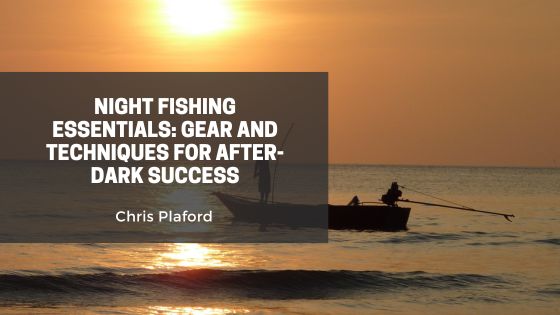Fishing at night offers a peaceful, productive, and often underrated opportunity to catch more fish. With less boat traffic, lower temperatures, and the natural behavior of nocturnal feeders, night fishing can be especially rewarding. However, it requires a different approach than daytime angling. The right gear, preparation, and techniques are essential to ensure both success and safety after the sun goes down.
Choosing the Right Lighting
Lighting is the foundation of any night fishing setup. Anglers should bring multiple light sources to stay organized and visible. A reliable headlamp keeps your hands free while tying knots, baiting hooks, or handling fish. Look for a model with a red-light mode to preserve night vision and avoid spooking nearby fish.
Lanterns or LED lights can be placed around your fishing area or boat for general visibility. Some anglers use submersible fishing lights to attract baitfish, which in turn draw in predatory fish like bass, catfish, or walleye.
Essential Gear for Low-Light Conditions
Simple and dependable gear is key when fishing in the dark. Glow-in-the-dark bobbers, reflective tape on rod tips, and luminescent lures help you track activity in low-light conditions. Some anglers also prefer using bells or bite alarms to detect subtle strikes they may not see.
Tackle boxes should be organized before the trip. Keep frequently used items like hooks, pliers, and spare line in easily accessible compartments. Use zippered pouches or small containers to avoid rummaging around and creating noise that could scare fish away.
Techniques That Work Best at Night
Fish behave differently at night, often moving to shallower areas to hunt for food. This shift in behavior means that shoreline casting, shallow diving lures, and topwater presentations can be particularly effective.
Slow your retrieval speed to match the more relaxed pace of nocturnal feeding. Fish rely more on sound and vibration at night, so use lures that create noise or movement in the water. Spinnerbaits, chatterbaits, and soft plastics with paddle tails are all solid options.
Live bait also shines during nighttime fishing. Nightcrawlers, minnows, and cut bait appeal to the heightened senses of fish in the dark. When fishing from the bank or a boat, be patient and allow fish time to investigate the bait before reacting.
Safety First on Every Trip
Night fishing adds an element of risk, so safety should always be a priority. Always tell someone where you’ll be fishing and when you plan to return. Carry a fully charged phone or communication device, and bring a GPS or map if you’re venturing into remote areas.
Wear a life jacket if you’re fishing from a boat, and keep an emergency kit on hand with a flashlight, batteries, snacks, and a first-aid kit. Check weather conditions before you head out, and avoid fishing in areas with strong currents or poor footing.
Conclusion: Preparation Makes the Difference
Night fishing can offer some of the most productive and peaceful angling experiences, but it requires thoughtful planning and the right gear. By staying safe, using appropriate lighting and tackle, and understanding how fish behave after dark, you’ll be well positioned for after-hours success.
